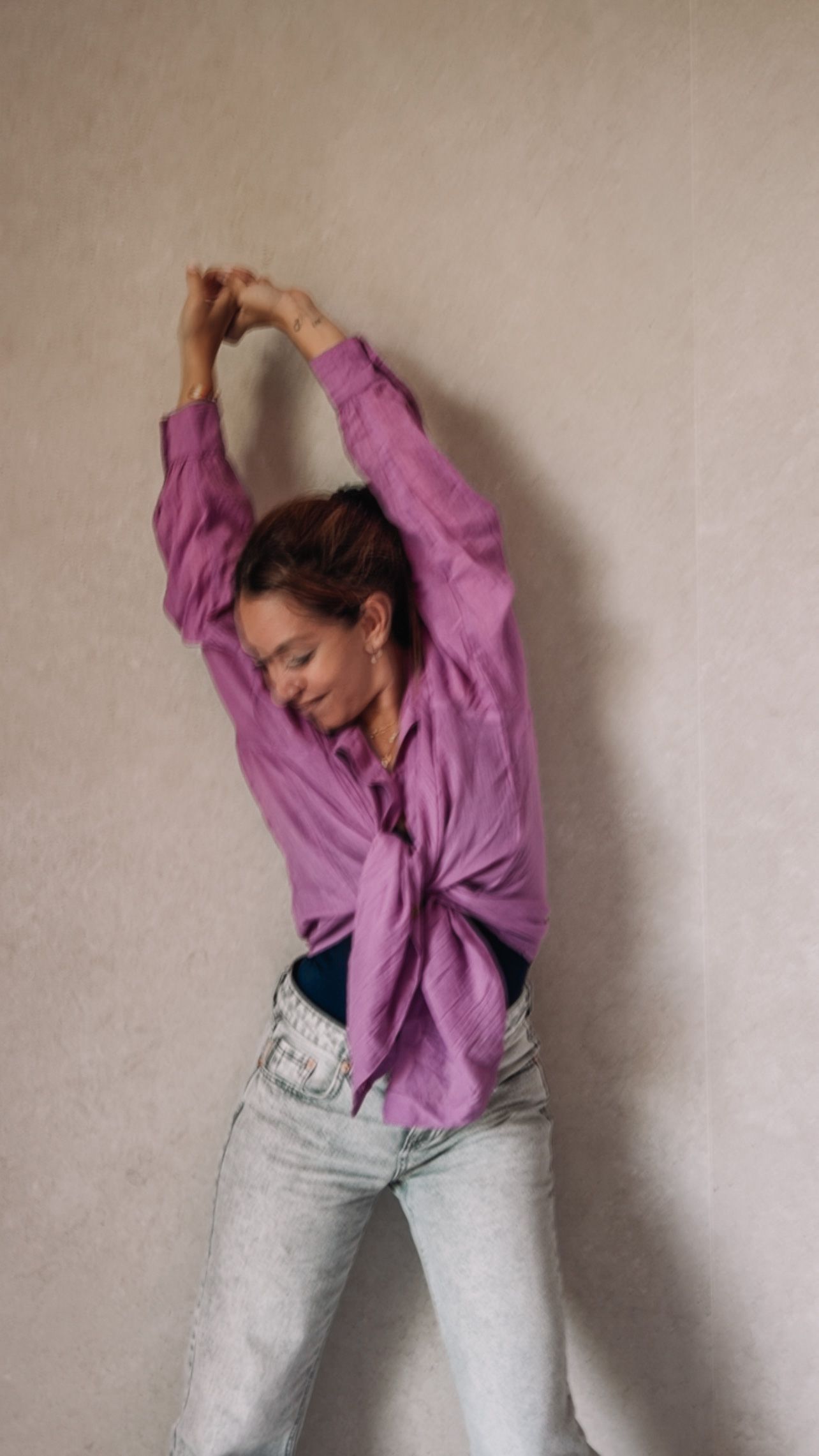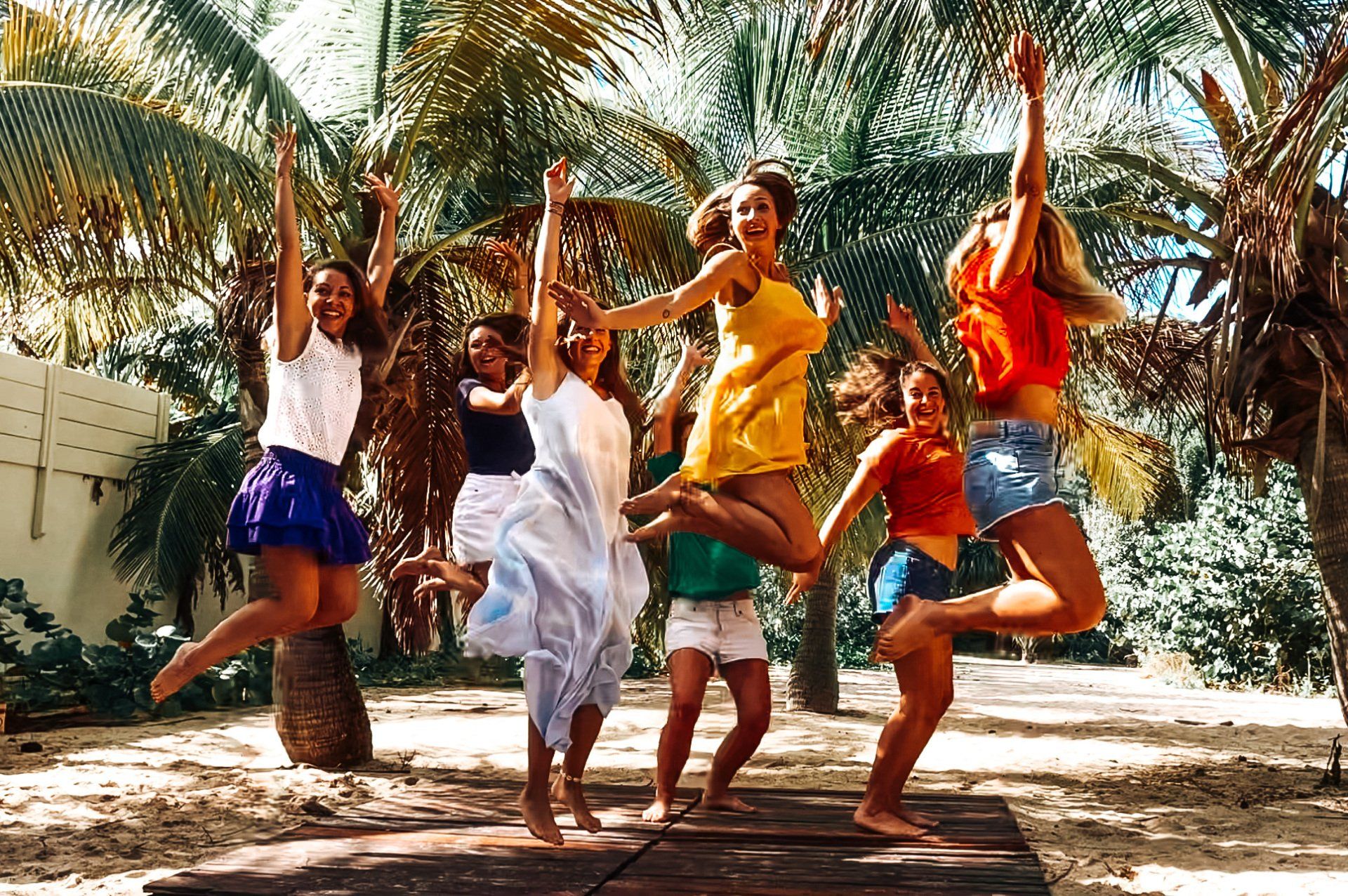Yoga Philosophy: Principles for a Balanced Life 🌟
Yoga Philosophy: Principles for a Balanced Life 🌟
Welcome to the vibrant and profound world of yoga philosophy, where each concept opens a door to a richer understanding of oneself and the universe.
Today, we're diving into the details of the philosophical jewels of yoga: Patanjali's Yoga Sutras, karma, and dharma.
Get ready to illuminate your daily life with ancient lessons that are still relevant today!
Patanjali's Yoga Sutras: A Compass for the Soul 🧭
The Yoga Sutras are like the ultimate GPS for navigating life's tumults with grace and wisdom. Patanjali, an ancient Indian sage, offered us 196 sutras (think of them as pearls of wisdom) that cover everything from how to treat others to achieving spiritual enlightenment.
Let's dive into the structure of the Eight Limbs of Yoga, ancient wisdom guiding us towards a meaningful and balanced life. Imagine a majestic staircase leading to inner peace and mental clarity - each step represents an aspect of yoga practice that, together, forms a complete path to enlightenment.
1.Yama: Ethical Foundations 🌈
Yamas are universal ethical principles guiding how we interact with the world around us. They include:
⭐️ Ahimsa (Non-violence): Living in a way that harms no one, neither through actions, words, nor even thoughts.
⭐️ Satya (Truth): Honoring truth in all our communications and living authentically.
⭐️ Asteya (Non-stealing): Not taking what is not given to us willingly.
⭐️ Brahmacharya (Moderation): Responsibly using energy, favoring connections that uplift us.
⭐️ Aparigraha (Non-possessiveness): Cultivating detachment towards material possessions, freeing ourselves from covetousness and accumulation.
2. Niyama: Personal Discipline 🪷
Niyamas are personal practices cultivating our inner garden. They include:
⭐️ Saucha (Purity): Maintaining cleanliness of body and mind, creating a sacred temple for our soul.
⭐️ Santosha (Contentment): Finding satisfaction in the present, accepting and appreciating what we have.
⭐️ Tapas (Discipline): Practicing self-discipline and the inner fire that motivates us to progress.
⭐️ Svadhyaya (Self-study): Self-reflection and the study of sacred texts for a deeper understanding of oneself.
⭐️ Ishvara Pranidhana (Devotion): Surrendering to a higher power, recognizing the interconnection of all life.
3. Asana: Physical Postures 🐒
Asanas are the physical postures of yoga, designed to strengthen the body, improve flexibility, and support meditation by preparing the body to sit without pain.
4. Pranayama: Breath Control 🌬️
Pranayama, or breath control, teaches us to use our breath to regulate our vital energy, calming the mind and preparing for deep meditation.
5. Pratyahara: Withdrawal of the Senses 🧎🏻♀️
Pratyahara is the practice of withdrawing our awareness from sensory distractions, helping us to turn inward.
6. Dharana: Concentration 🙇🏻♀️
Dharana teaches us to focus our attention on a single point or object, an essential step before deep meditation.
7. Dhyana: Meditation 🧘🏻♀️
Dhyana, or meditation, is a state of prolonged awareness on an object, thought, or sound, where the flow of attention becomes continuous and uninterrupted.
8. Samadhi: Union 🍀
Samadhi is the experience of merging with the meditation object, a state of super-consciousness and unity with the Universe.
By traversing these eight limbs, we embark on a journey of personal transformation, evolving towards greater harmony with ourselves, others, and the universe. It's a path to wisdom, where each step is a discovery, each practice a refinement of the soul.
Karma: The Universe's Subtle Art ☪️
The concept of karma is often misunderstood as simply a kind of cosmic punishment or reward system. However, in its true essence, karma is much deeper and serves as a guide for living a more conscious and intentional life.
Understanding Karma
Karma is a Sanskrit word meaning "action," "work," or "deed." It refers not only to physical actions but also to thoughts and words. According to the philosophy of yoga and other Eastern thought systems, every action we undertake generates a force that will come back to us in some way in the future. It's not a law of punishment but rather a principle of balance and universal harmony.
Living Karma in Daily Life
⭐️ Choosing Kindness
Adopting karma in daily life means consciously choosing kindness in our interactions. Kindness is not just an outward action but also an inner attitude of compassion and empathy towards others. By choosing kindness, you create positive ripples that influence not only those around you but also come back to enrich your own life.
⭐️ Engaging in Positive Actions
Living in accordance with karma is also actively engaging in actions that positively contribute to our environment and society. This can range from simple acts of kindness in daily life to more significant commitments like volunteering or supporting just causes. Every positive action plants the seeds for a brighter future.
⭐️ Being Mindful of Our Actions' Impact
Awareness is a central pillar of karma. This means being mindful not only of what we do but also of the impact of our actions. This awareness prompts us to think before acting and to consider how our words and actions affect others and the world around us.
Making Karma Your Ally
By understanding and embracing the true meaning of karma, we can make it our ally in creating a life and future where harmony and happiness reign. This doesn't mean life will be devoid of challenges, but by consciously sowing the seeds of kindness, positivity, and compassion, we can influence the course of our life in a brighter and more meaningful direction.
In summary, karma encourages us to live with intention, to choose kindness, to engage in positive actions, and to be mindful of the impact of our actions, thus weaving an interconnected web of cause and effect that shapes our future. It's a call to live more awake, in harmony with the universal laws of balance and justice.
Dharma: The Quest for Meaning 🍃
The concept of dharma is deeply rooted in several philosophical and spiritual traditions of India, including yoga. It represents a key principle guiding individuals towards realizing their true nature and the purpose of their existence. Dharma can be seen as an inner compass, a set of duties and responsibilities that reflect each person's unique essence and their contribution to the world.
Finding and Living Your Dharma
⭐️ The Unique Expression of Your Talents
Your dharma is the authentic expression of who you are: it encapsulates your innate talents, your passions, and the gifts you are meant to share with the world. It's the path through which you fully realize your potential and make a meaningful contribution to society. Living according to your dharma means aligning your daily actions with what you feel to be your ultimate purpose.
⭐️ The Melody of Your Soul
Imagine that each individual plays a unique melody in the grand orchestra of the universe. Finding and living your dharma is discovering this melody of your soul and playing it in perfect harmony with the rhythms of the universe. This involves deep introspection and attentive listening to your inner voice to understand how you can best serve the world while remaining true to yourself.
Applying Dharma in Daily Life
⭐️ Explore Your Passions
The quest for your dharma begins by exploring the things that truly excite you. These are often valuable clues leading you towards your ultimate goal. Engage in activities that resonate with your heart and give you a sense of purpose and joy.
⭐️ Listen to Your Intuition
Your intuition is a powerful guide on the path of dharma. It helps you navigate through life's choices by directing you towards actions that are in alignment with your true essence. Take time to meditate, reflect, and be in silence to better hear this inner voice.
⭐️ Engage in Activities That Make You Feel Alive
Living your dharma involves participating in activities that not only fulfill you but also benefit others. This might mean pursuing a career that reflects your values, engaging in volunteer work, or simply bringing joy and inspiration to the people around you.
⭐️ Your Unique Contribution
Understanding that each individual has a unique role to play in the grand scheme of the universe is fundamental. Your dharma is that irreplaceable contribution to the broader story of the world. By living it fully, you not only realize your potential but also enrich the lives of others and contribute to collective evolution.
In summary, dharma is a call to live authentically and meaningfully, aligning your actions with the deep desires of your soul. It's an invitation to contribute to the world in a unique and personal way, playing the melody of your existence with courage and integrity.
The Yoga Sutras in Everyday Life 📖
Patanjali's Yoga Sutras, an ancient and foundational text in the practice of yoga, offer much more than a guide for physical practice. They propose a path to a richer and deeper life, where every action and thought are imbued with awareness and meaning. Applying the teachings of the Yoga Sutras in daily life can transform not only our practice on the mat but also how we live off the mat.
⭐️ Practice Self-Reflection
The sutras encourage deep self-reflection, inviting us to use these teachings as a mirror to better understand our thoughts, actions, and motivations. This introspection can reveal aspects of our being we hadn't realized, helping us to grow and evolve. By meditating on the sutras and applying them to our own lives, we can develop a sharper awareness of our thought and behavior patterns and actively work to improve them.
⭐️ Cultivate Inner Peace
The pranayama (breath control) and meditation techniques offered in the Yoga Sutras are powerful tools for cultivating inner peace. By incorporating these practices into our daily routine, we can learn to manage stress and anxiety more effectively, allowing us to navigate life's challenges with increased serenity. The ability to remain calm and centered in stressful situations is an invaluable gift that the sutras offer us.
⭐️ Act with Integrity
The yamas and niyamas, the ethical and moral principles of yoga, provide a framework for living a life of integrity. By letting these principles guide our interactions with others and with ourselves, we foster an existence marked by respect, honesty, and compassion. Living according to the yamas and niyamas can transform our relationships, our relationship with the world, and our understanding of ourselves. These principles encourage us to act with kindness, to practice self-discipline, and to cultivate a sense of gratitude and contentment in our life.
In sum, the Yoga Sutras offer profound wisdom that can enrich our existence significantly. Their application in everyday life allows us to live more consciously and intentionally, in harmony with ourselves and with the world around us. It's by carrying these teachings in our heart and in our actions that we can truly live yoga beyond the mat, transforming every moment into an opportunity for growth, peace, and joy.
By integrating the wisdom of karma, dharma, and the Yoga Sutras into your life, you embark on a transformative journey towards a richer and more meaningful existence. It's a journey of awakening where each step is an act of discovery, each action a gesture of creation, and each moment an opportunity for harmony.
Namaste, travelers of consciousness. May your exploration of yoga philosophy enrich every breath, every choice, and every day of your life. 🌺






